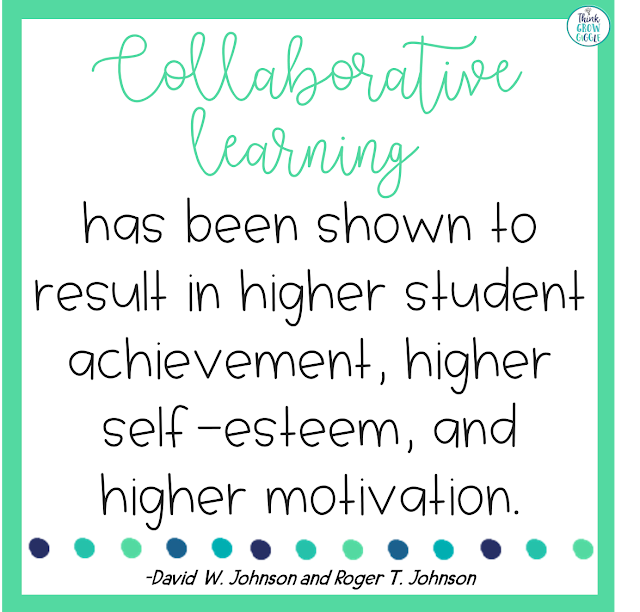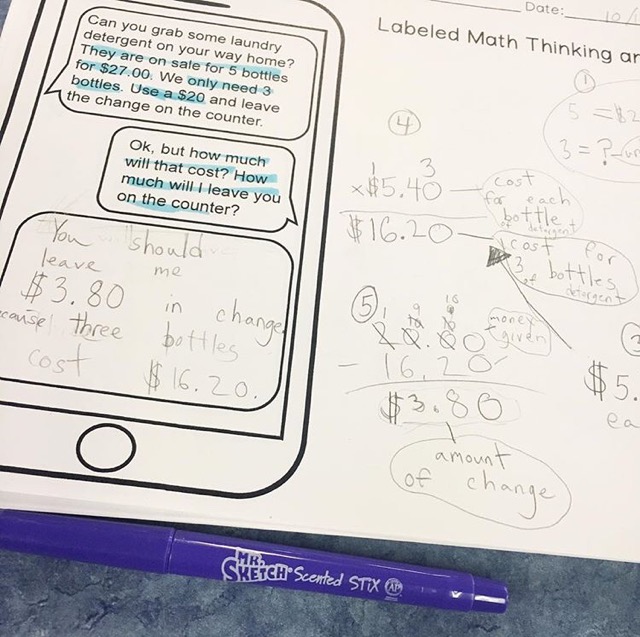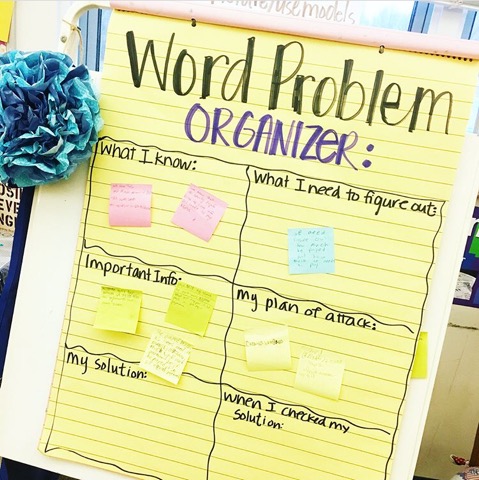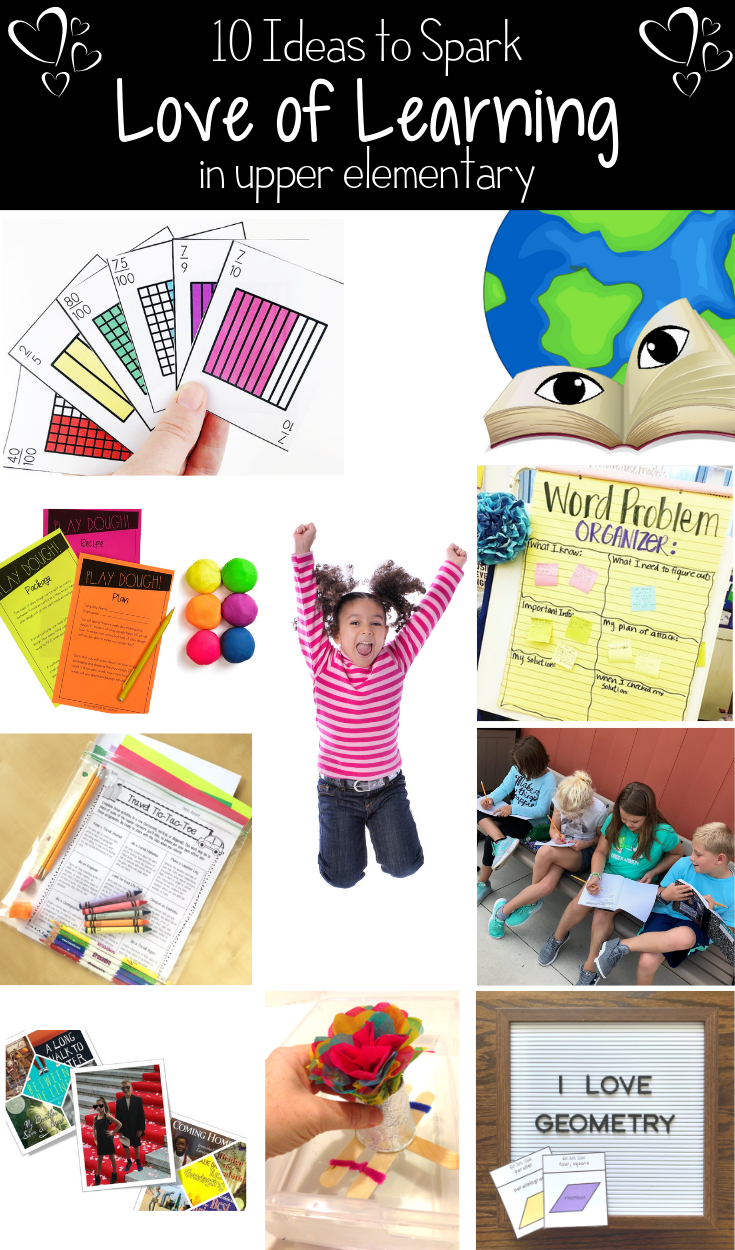When it comes to getting students to love learning, particularly a content area that they are not interested in or lack confidence in, the best place to begin is to think about what motivates and engages your students.
Although this can differ slightly from year to year, many strategies to motivate students remains the same: encouraging a positive attitude, engaging students in a cooperative group or partner work and assigning meaningful activities and tasks.
When these strategies are coupled with appropriate scaffolding and teacher
communication, students’ interest in math and perception about themselves as
math students changes, and changes greatly! Turn your students’ dislike for
challenging problem-solving activities into excitement and eagerness to
complete the task at hand with these tried and true tips and strategies.
To counter the fear and stress that students face, spend time fostering positivity, and a growth mindset in your classroom. A simple discussion about persevering and trying hard goes a long way.
Remind students that by working on
difficult math problems they are actually growing and stretching their brains.
This type of mind shift doesn’t happen overnight. Develop a classroom mantra to
encourage grit and a growth mindset with your students. By creating
a class math mantra with your students, you increase student
buy-in. Do not just create one and then tell students to say it. Make sure to
work together to make a meaningful mantra for your classroom community. Post
your math mantra all over your classroom and include it during your math
lessons. You might begin each lesson with the class chanting it to engage them
right from the start of each lesson. Be sure to post it in a visible
place, so that each day and lesson begins with a positive attitude! Teach more
than one section of math? Create individual math mantras for each class and
create a wall of math mantras in your classroom!
Teacher Tip: Your attitude is
contagious! Be sure to always have a positive attitude during math
problem-solving lessons!
Many upper elementary students’ initial reaction when it comes to math problem solving is stress and worry. The fear sets in on where to begin and how to attack a multi-step word problem. It can be
overwhelming when faced with a problem with large numbers, many different skills, and overly wordy. Insert a mindset shift to help students develop a growth mindset.
“Collaborative learning has been shown to result in higher student achievement, higher self-esteem, and higher motivation.” (David W. Johnson, Roget T. Johnson, 2009)
I have found this to be especially true during math problem-solving tasks. Math, specifically multiple-step problem-solving tasks, must be discussed over and over before it is fully digested and comprehended. When students work together, they are given the opportunity and time to discuss the problem, and then plan how to solve it. Working together helps students check and fix their work and helps to build confidence in both their skill work and problem-solving strategies. No student wants to make a mistake in front of their peers. When working with another student or a small group, students feel safe and more willing to take risks, try more complex tasks, and show their work while explaining the steps that they have taken.
See it in action with this idea: Present students with a
multi-step word problem to complete on their own. Then ask them to complete the
same problem with a partner. Watch as their engagement and completion of tasks
increase along with student success.
Teacher Tip: Make the most of group problem-solving tasks by setting time at the beginning of the year to discuss what math discussions sound like. Encourage meaningful math discourse with math-specific discussion stems and questions. Grab a set for FREE at the bottom of this post.
See it in action with this idea: Present students with a multi-step word problem to complete on their own. Then ask them to complete the same problem with a partner. Watch as their engagement and completion of tasks increase along with student success.
When it
comes to math, nothing is more powerful than presenting students with
meaningful and authentic real-world tasks. Tasks that students can relate to
and make connections with, will increase engagement, time on task, and small
group math discourse. Think about what interests your specific cohort of
students. Are they interested in gaming? Sports? Baking? Outdoor
adventure? Once you know what will grab their attention create problems
and tasks centered on their interests.
Meaningful real-life complex tasks that offer an open-ended approach to solving
will increase student time on task and perseverance as students no longer see aright and wrong way to solve the problem, but rather many different ways to
work together, brainstorm, and solve the problem.
Don’t forget that students LOVE technology! Integrate their love and knowledge
by completing problem-solving on websites like Thinking Blocks or
by creating multiple-step problem-solving activities in the form of a text. Grab a FREE sample at the
bottom of this post.
Teacher Tip: No time to create your
own interest-specific math problems? Challenge your students to come up with
word problem ideas, topics, or tasks and submit them to you! Use those problems
in small groups so students do not solve their own, but instead a classmates’
problem. Students LOVE to have other students solve their problems.
When we scaffold during math, specifically when solving multiple-step word problems, we set students up for success. Scaffolding is a gradual process. It is important that students begin to feel successful and confident when problem-solving before you back completely away and expect them to solve complex problems on their own. This is especially true for struggling math students.
One strategy that I have found to be successful in building student confidence
and accuracy for solving problems is through the use of graphic organizersduring math. Start off by using a chart size graphic organizer template with
these labeled sections: what I know, what I need to figure out to solve
the problem, important information to help me, my plan of attack, my solution,
and when I checked my work I noticed.
Start on day one by solving a multiple-step word problem, modeling how to
complete the graphic organizer by writing the information for each section of
the graphic organizer on sticky notes and placing them on the graphic
organizer. Repeat the process for the next few days with the students so that
they can practice using the graphic organizer. The following week have students
work with a partner to
complete the sticky notes for the first few boxes only so that the students do
not actually solve the problem. This allows time for students to build
confidence in their understanding of word problems and how they plan to solve
them, rather than trying to manage the organizer AND solve the problem. This
also allows time for you to discuss all the pre-solving strategies with the
students.
The following week have students work with a math partner, or in small groups,
to use the organizer to problem solve. The scaffolding that you provided
and the time devoted to teaching and practicing the use of the graphic
organizer will build students’ perseverance skills and lessen the fear of
solving math word problems. Send the graphic organizer home with students to
help them complete homework, too! Grab this math graphic
organizer to help you scaffold math problem-solving in your classroom for FREE HERE.
Teacher Tip: Switch up math
partners and groups often when scaffolding. This will ensure that students do
not rely on other students to complete the organizer.
There is nothing more important to increase student confidence, success, and perseverance than by communicating with them what they are doing well and how they can grow.
Students need to hear about both their successes and areas of growth so that
their work is validated AND so that they have a clear direction and focus of what
they need to work on next. Write on their work, hold formal student
conferences, or simply kneel beside them as they work to chat about what they
are doing.
Whatever strategy you choose to communicate, be sure to communicate with them individually so that there is no doubt that they are the focus of your discussion and not their math partner. Be sure to use the word goal when discussing an area that students can improve. Using the term, “a goal I would like to see you reach," makes what you want to see students do become real and attainable for them. Try writing the goal you have for the student on a sticky note and place it into their math notebook or workbook. This will serve as a reminder of what they are working towards for both you and the student.
Teacher Tip: Communicate every small success with your students! Students love to be celebrated! When you celebrate any small milestone, students are more likely to repeat that act. You can celebrate students completing the math graphic organizer correctly, using math talking stems appropriately, and increasing their participation in math. Grab these FREE digital and printable student awards HERE.
- Spark a Love of Learning with Games | The Owl Teacher
- Spark a Love of Social Studies | Tried and True Teaching Tools
- 3 Ways to Inspire a Love of Fractions | Mix and Math
- Just-Right Reading: I Love Myself! | Reading by Heart
- Loving to Write Informational Texts | Mikey D Teach
- Valuing Student Voice to Create a Love of Learning | Wild Child’s Mossy Oak Musings
- Developing Grit: Learning to Love a Challenge | Kerry Tracy

























